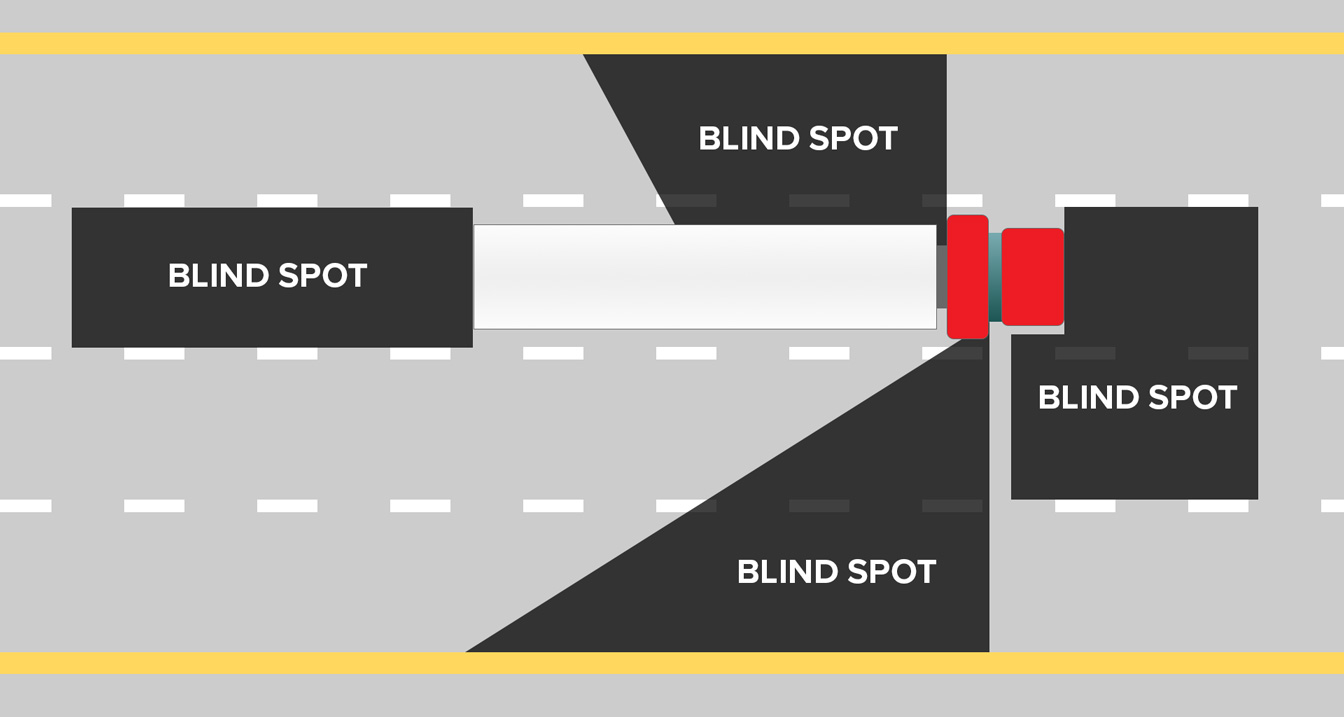4 Tips for Sharing the Road with Semi Trucks
“The Crossroads of America.” That’s Indiana’s state motto, and Indianapolis, being a hub of interstate traffic, wholeheartedly embraces that role of connecting the state to the rest of the country. If you live in Indianapolis, you likely drove on an interstate highway at least once today to get where you needed to go. But even […]
June 19, 2017

“The Crossroads of America.” That’s Indiana’s state motto, and Indianapolis, being a hub of interstate traffic, wholeheartedly embraces that role of connecting the state to the rest of the country. If you live in Indianapolis, you likely drove on an interstate highway at least once today to get where you needed to go.
But even though driving on the interstate is second nature to us, driving next to a semi can still make us nervous. After all, since we spend so much of our time on highways, we see plenty of semi truck accidents.
These four tips can help you breathe easier the next time you encounter a semi on the highway.
1. Stay Out of Blind Spots
All vehicles have blind spots, but since semi trucks are so large, their blind spots are correspondingly bigger.
The following graphic illustrates a semi truck’s blind spots:

The blind spot on the truck’s right side covers two lanes of traffic and should be avoided if at all possible. The truck driver may be able to see you if you are on the left side of the truck, but you should still try to avoid the area.
Make sure that if you are passing a semi truck, you don’t return to the truck’s lane until you are a safe distance ahead of the truck, because the driver has a blind spot at the front as well. Typically, it is a good idea to make sure you can see the entire cab of the truck in your rear-view mirror before switching back into the truck’s lane.
The blind spot at the back of the truck is not only dangerous because the trucker can’t see you, but also because you can’t see much beyond the truck itself. By tailgating the semi, you are giving yourself additional massive blind spots and increasing your likelihood of an accident.
2. Give Semi Trucks Space

Not only do you need to give semi trucks space because their blind spots are huge, but also because the weight of their load affects their ability to drive. Semi trucks, especially ones empty of cargo, can be more susceptible to the wind and accidentally drift into your lane.
On the other hand, semi trucks carrying thousands of pounds of cargo will have a greater difficulty stopping suddenly than other vehicles. If you cut off a semi truck and slow down or stop suddenly, the truck driver may not have enough room to slow his truck down and avoid a collision. Make sure there’s enough space between you and the semi truck you’ve passed so that way the driver can see you and has enough room to stop if necessary.
If you’re behind a truck, it’s just as important to give it plenty of space. You’re stuck in a blind spot, and you’re unable to see what’s happening ahead of the truck, making it difficult to anticipate its movements. If you’re tailgating a truck and it stops suddenly, your car could slide under the truck, likely causing severe damage and injuries. The truck in front of you could also roll backward if paused on a hill.
Regardless of whether you’re in front of or behind it, it’s a good idea to give a semi truck plenty of space.
3. Pass Quickly

While we don’t recommend that people zoom past semi trucks at 100 miles per hour, we do encourage drivers to pass semis as quickly as legally possible.
Because semi trucks have so many blind spots that vary in size depending on what side of the truck you’re on, it can be difficult to tell whether you’re in the clear or still in danger unless you’ve completely passed the truck.
Don’t dawdle on either side of the truck, or else you may end up in a blind spot. Instead, commit to passing the truck and returning to truck’s lane a safe distance ahead of the vehicle.
If a semi truck is trying to pass you, slow down so the truck can pass quickly and easily re-enter your lane a safe distance ahead. Don’t try to speed up or pass the truck on the right.
Try not to get too frustrated if you see two semi trucks riding side-by-side and blocking any opportunity for you to pass. Some semi trucks have limits on how fast they can go, and the incline of the road can affect a truck’s speed. One semi may have intended to pass the other but then was slowed down by a steep incline. Semi trucks don’t like it when they end up driving right next to each other any more than the vehicles stuck behind them. Try to stay patient and wait for one semi to pass the other before attempting to pass.
If you can’t get around the truck or stay a safe distance behind it, we recommend you stay on the left side of the truck. The right side of the truck has the largest blind spot, making it a particularly dangerous spot to idle in.
4. Watch for Wide Turns

Trucks have to make wide right turns. Sometimes, people think they can pass trucks on the right because the trucks have to swing wide initially in order to turn right. However, speeding past a truck on the right side while it’s trying to turn right is an incredibly dangerous move and will likely result in a serious accident that may cause personal injury.
It’s also important to stop short of the white line at an intersection so that semi trucks turning onto your road have enough room to get into the opposite lane. If you overshoot the line, especially in a left-turn lane, you may end up blocking a semi truck from turning onto your road safely.
Help from an Indiana Truck Accident Attorney
Driving next to semi trucks can be intimidating, but these four tips should help you navigate Indiana’s many interstates safely.
However, if you do get into a serious truck accident, an Indiana truck accident attorney can help. Call Hensley Legal Group today or contact us online for a free consultation.
Available 24/7
Free Case Review
You won’t pay any fees until we win your case.
It’s easy - you can: